CRITIQUE
The Form of Form when everything is architecture
Architect, curator and editor
2001 A Space Odyssey engrossed us with clean monoliths. Released in 1968, that decisive year of visceral social convulsion and cultural revolt, the film, directed by Stanley Kubrick and written by Arthur C. Clarke, began with the apparition of a parallelepiped monolith that instigated the development of human civilization. Without a known origin, function or composition, but with a defined form, that monolith essentially presented itself to us as an enigma. Throughout the narrative we were to witness its impenetrable power over humans, revealing a path to enter into the mysteries of existence.
The 4th Lisbon Architecture Triennale, curated by André Tavares and the recently deceased Diogo Seixas Lopes, launched a challenging theme, The Form of Form, questioning the contemporary position of form. In its inherently tautological arrangement, The Form of Form presented itself as a risky and polemic choice. Starting with the redirection of the discipline towards the field of social and human sciences, which began during the last decade, and for which the last Lisbon Triennale, curated by Beatrice Galillee, had been one of the more obvious examples, and that this year would have recognizable manifestations in the Oslo Architecture Triennale and the Istanbul Design Biennale, curated by the architecture theorists Mark Wigley and Beatriz Colomina. These new expansive disciplinary approaches have been centred on a criticism of the formalism of contemporary architecture, questioning the affirmation of the systemic phenomenon of the architectural star-system and the consequent deviation of the great challenges facing contemporary societies. The question of form has therefore become a somewhat off-limits and proscribed theme in face of the generalized formalism of the dominant architectural culture. It is in this context that the courage of the curators and the pertinence of the theme The Form of Form can be understood. This year’s Triennale could be the search for a vaccine to fight the disease, inoculating the virus itself in homeopathic doses.
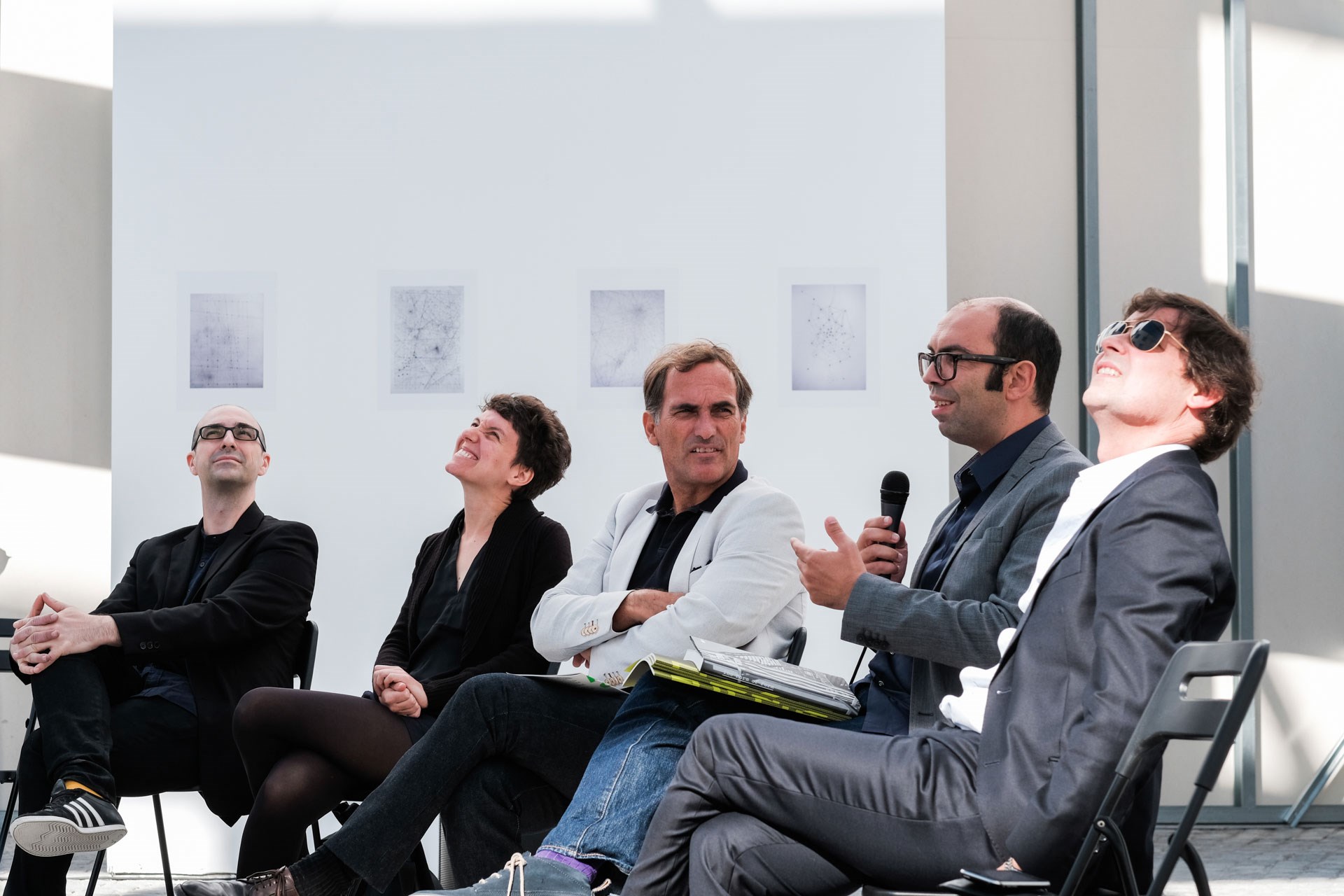
© Pedro Sadio
André Tavares expresses the dissatisfaction with the current state of architecture, underlining its oscillation between the extremes of the “formalism of star architects” and the “activism and seemingly socially responsible actions of an architecture centred on the informal”. To this he also adds the “bureaucratization” and subsequent banality of current building industry. The curators of this edition of the Triennale seek to intentionally distance themselves from this corseted condition: “architecture cannot afford to be thematic: participatory architecture or digital architecture or fashion architecture”, considering that “architects must be capable of transcending the thematic borders that oversimplify architecture”. As such, Tavares and Seixas Lopes propose an approach to architectural form as a means to accomplish its realization.
It therefore becomes relevant to understand that The Form of Form finds its disciplinary genealogy precisely in the moment preceding the affirmation of contemporary formalism, which began in the 1970’s and can be found in the systematic institutionalization of post-modern, deconstructivist and neo-minimalist tendencies. It is important to understand that it was during the 1960’s that architecture really explored the question of the position of architectural form, solidifying its autonomy as a disciplinary question and establishing its links with the timeline of history, from Palladio to Durand, and including Piranesi and Boullée.
Let us then allow for a brief digression into the formal proposals of that decade. In 1962, Hans Hollein and Walter Pichler published the Absolute Architecture manifesto for an “elemental”, “spiritual” and “purposeless” architecture, asserting that “what we build will find its use”. The “constructed form” is what remained from that process or approximation with the “absolute”. The following year, Peter Eisenman presented his doctorate on The Formal Basis of Modern Architecture, proposing a new exclusively formal approach to heroic modern architecture. In his article of that same year, “Towards an Understanding of Form in Architecture”, he revealed his interest in the “relationships of form with any architecture”, taking into account that “formal considerations are the base of all architecture regardless of style”. He upheld the “supremacy of form”, which is, “to give preference to absolute ends over temporal ones”. Here, form is what is before or beyond the totality of its exterior determination. Later, in 1966, Aldo Rossi published his treaty L’Architettura della Città, where he developed a “typological” approach to urban morphology, proposing to divide the modern interdependence between form and function. He underlined the “invariant” condition of formal architecture over history, considering that “the value of these artefacts often resides solely in their form”. The typological form was manifested in its material permanence. Finally, at the end of the 1960’s, Superstudio developed, with an ideologically critical undertone, a “single form of architecture” of “static perfection”, a “closed and immobile object”, radically abstract and void of any apparent function and significance, indifferently embedded in the most diverse places across the globe. With the “continuous monument”, form became mute, self-referenced. Ultimately, it can be said that the primary formulation of The Form of Form can be found in these examples, along with some others from the 1970’s.
However, today The Form of Form is also the recognition of an international tendency of disciplinary refocus, through a great periodic event, and with the consequent focus on formal and constructive questions. The truth is that this edition of the Lisbon Triennale calls upon a set of energies and movements generated around epicentres in Switzerland and Italy, more notably, the ETH in Zurich and the group responsible for the San Rocco magazine, elements with which Seixas Lopes and Tavares built important connections and that significantly imprinted their presence among the participants of The Form of Form. On the other hand, it is today impossible to approach the question of disciplinary autonomy and the formal nature of architecture without referring to the fundamental role played by Pier Vittorio Aureli over the last few years. We were lucky enough to have him be a part of the conferences in the 2010 Triennale, and now as a participant in the exhibition The World in Our Eyes. His influence is manifested on a theoretical level, especially with books like The Project of Autonomy: Politics and Architecture within and Against Capitalism (2008), focussing on the Italian architectural context in the transition from the 60’s to the 70’s, and The Possibility of an Absolute Architecture (2011), where he approaches, among others, architects such as Palladio Piranesi, Boullée, Rossi, Ungers and even the young Koolhaas, as well as on a practical level, with his design activity with Martino Tartara at the award-winning studio Dogma. The Form of Form fits into this developing theoretical context, although the genealogy remains more implicit than explicit.
Nevertheless, let us focus on the actual programme of the Lisbon Architecture Triennale. Despite the relative autonomy of each exhibition, this edition needs to be understood as a whole. This becomes clear when in the catalogue André Tavares explains that: “The form of form rests upon this tripod – oscillating between form-process-description, between authorship-construction-analysis, between visual-physical-social – in order to acknowledge architecture’s role in contributing to the production of space”. This three-sided contraction is explicitly reflected in the three main exhibitions, respectively, The Form of Form at MAAT, Building Site at the Calouste Gulbenkian Foundation and The World in Our Eyes at the CCB.
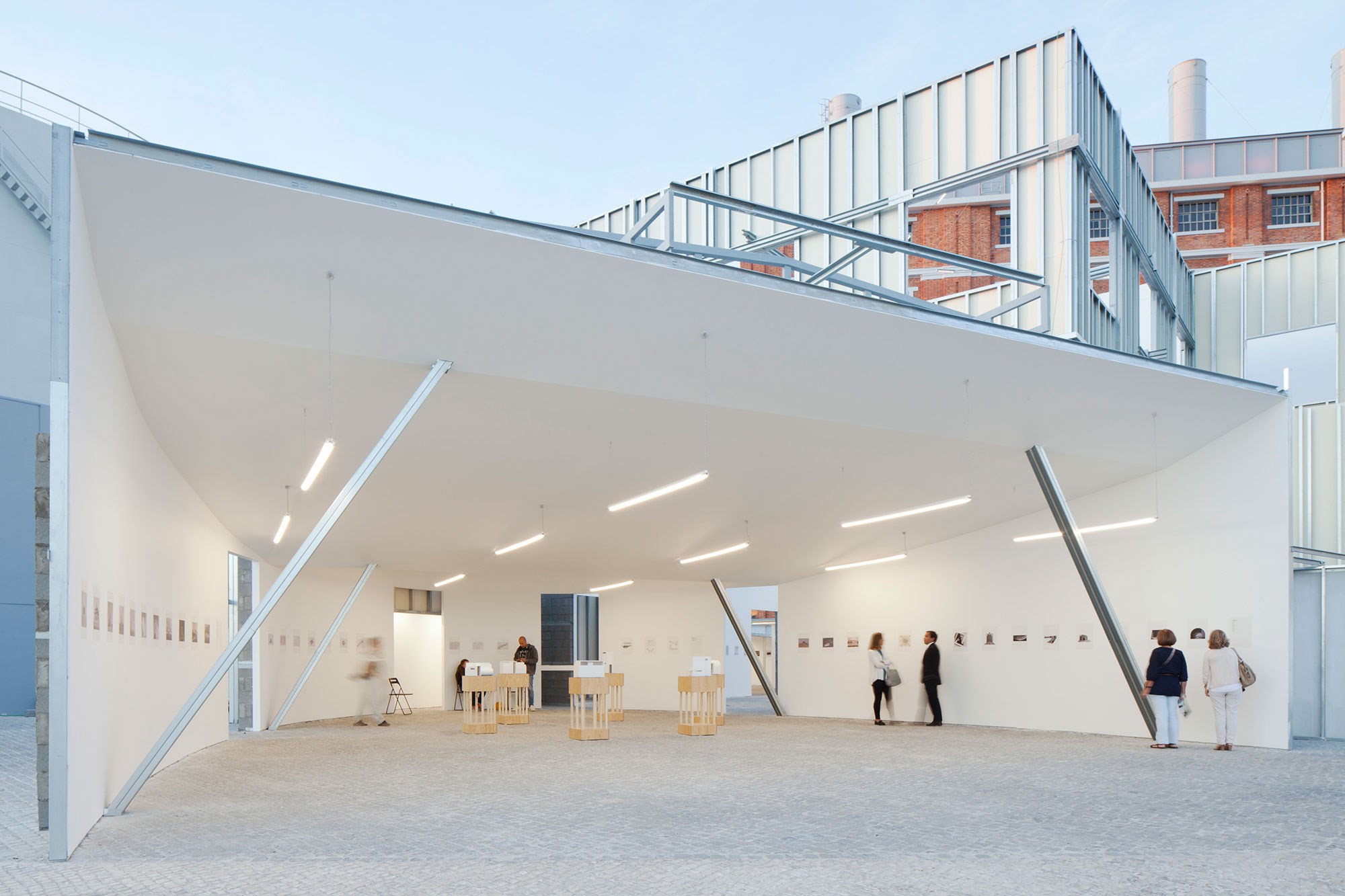
© Tiago Casanova
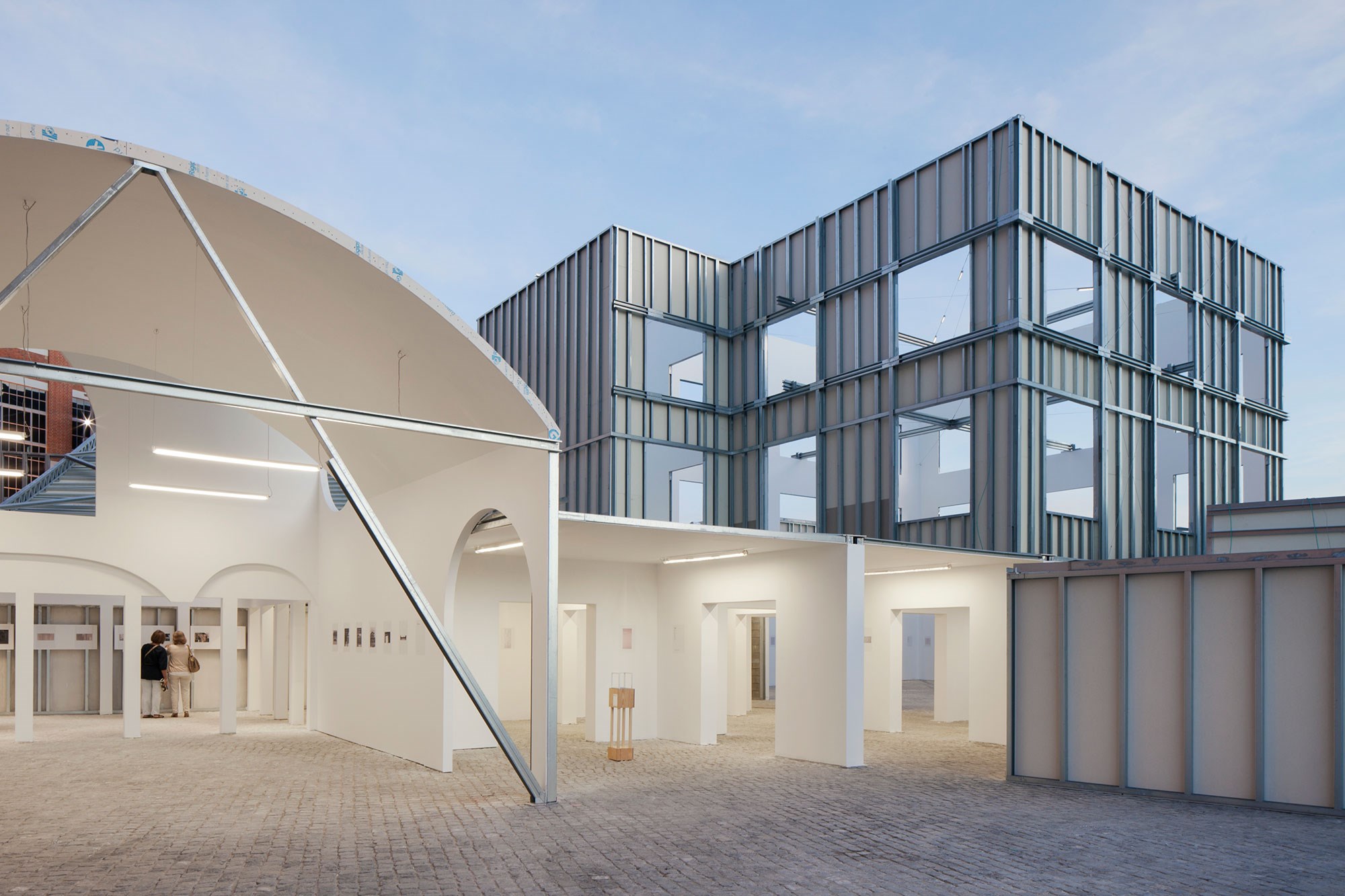
© Tiago Casanova
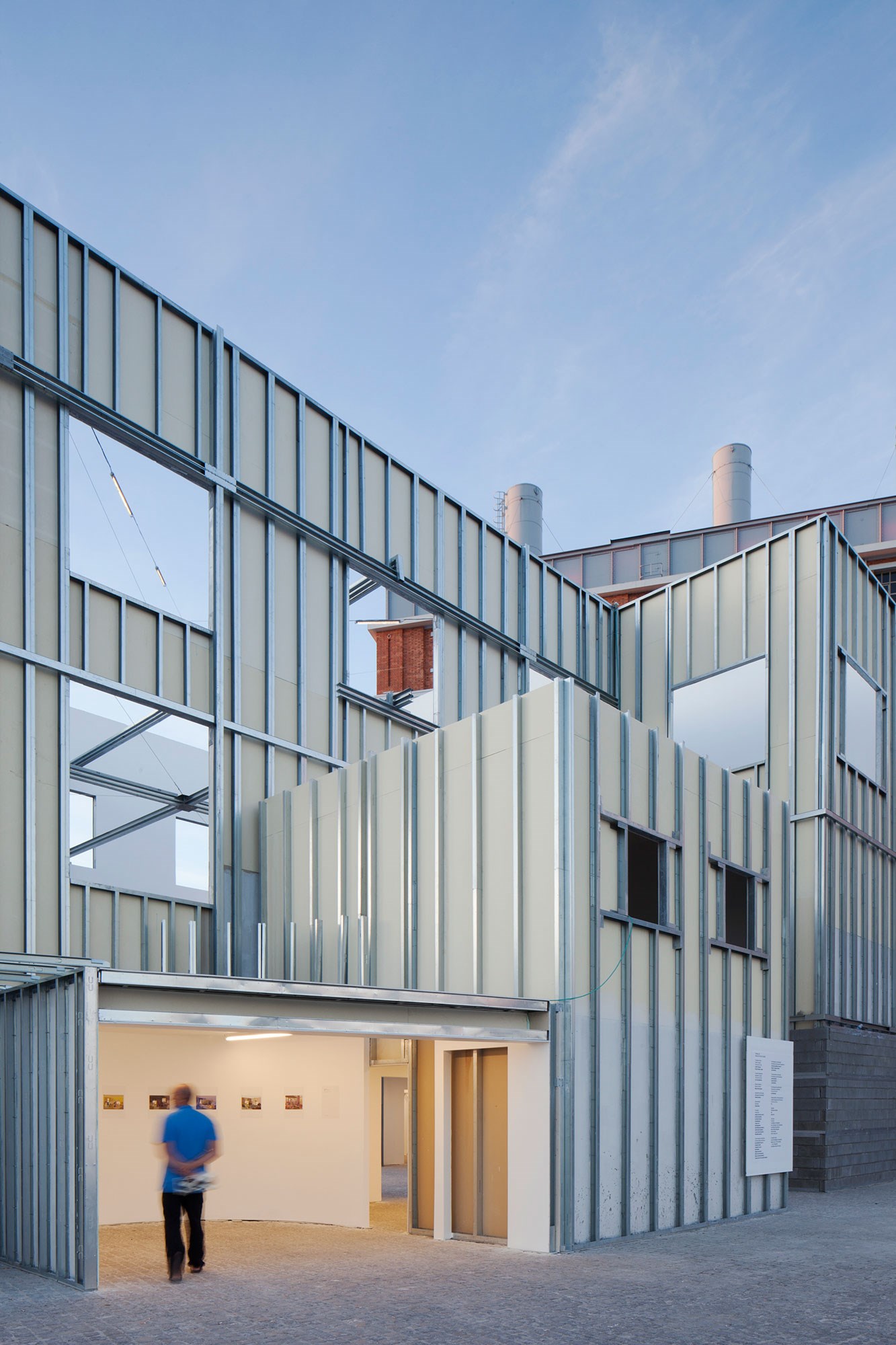
© Tiago Casanova
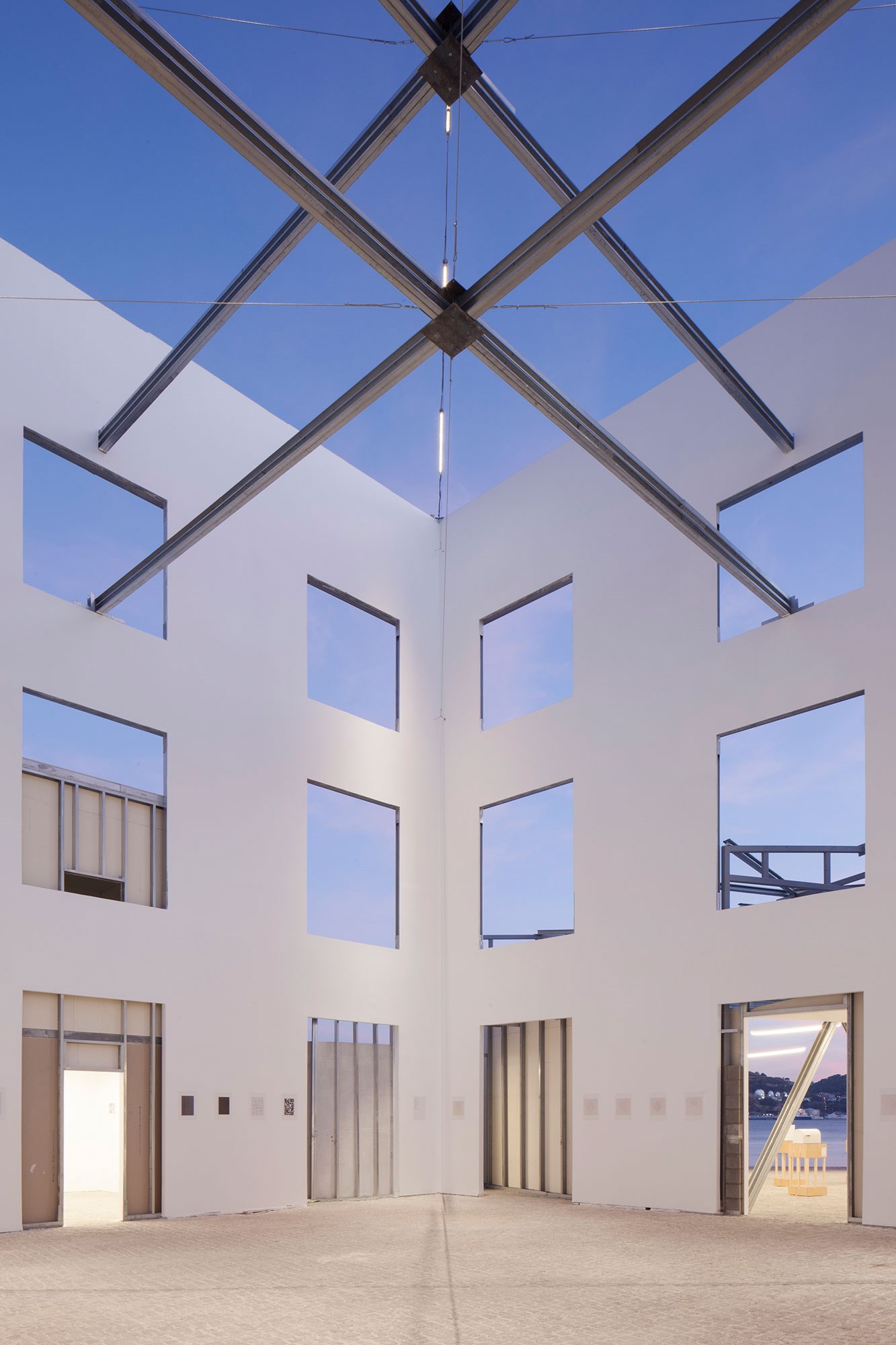
© Tiago Casanova
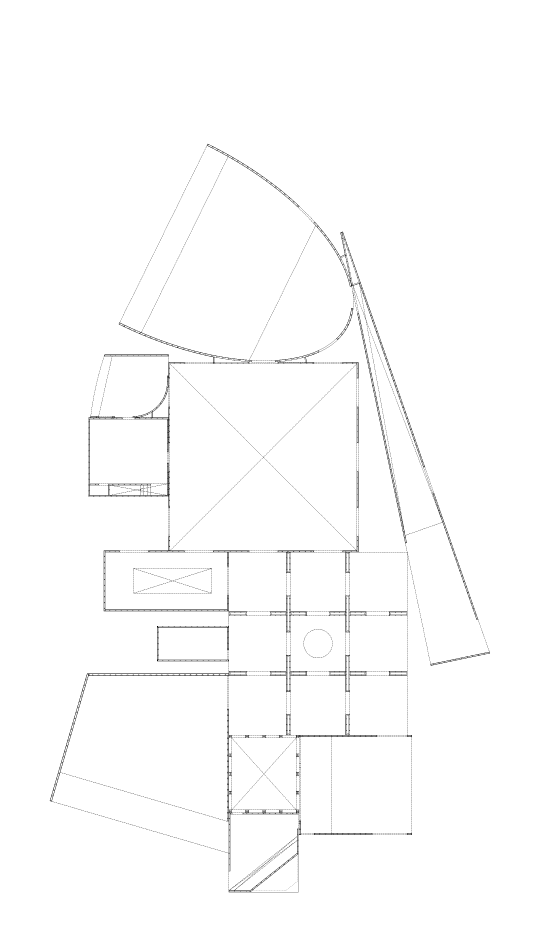
The main exhibition, taking into account that it presents the same name as this edition of the Triennale, The Form of Form, is located in the exterior patio of the Central Tejo building of the recently inaugurated MAAT – Museum of Art, Architecture and Technology. Curated by Diogo Seixas Lopes, this ephemeral full-scale construction takes on the form of a challenge set from a series of questions followed by a hypothesis: “What is architectural form? What does architectural form mean? And why is it so significant today? From our perspective, architecture is a visual construct with a full field of responsibilities and hidden values”. Above all else, this is a challenge to the experience of real space; seeing that the curator understood that it would always fall short if it were merely based on representations. This is a real construction, a real space of experience. However, and paradoxically, it is also a representation, considering that its spaces allude to already existing works or projects. In truth, at first it is hard to accept the argument of the formal reduction of these projects due to the suppression of place, programme, technique and matter, which have been the fundamental principles for the legitimization of the architectural form throughout history. Effectively, these are abstract constructions, pure spaces that have been subtracted of their exterior determination, whether contextual, functional, linguistic or material. However, against the proposed risk, in a way this construction transforms into another one, freeing itself from its tether to reality. And this is only truly comprehended when The Form of Form is not so much understood as a theoretical manifesto, but as the materialization of a research process. In fact, this construction is the result of a collaboration process between three young ateliers, the Belgian Office Kersten Geers David van Severen, the American Johnston Marklee and the Portuguese Nuno Brandão Costa. This work in progress had its problems, beginning with the shift from the interior to the exterior of the Central Tejo, but it also had some revealing moments, for example when the three ateliers decided that the other two participants would determine each other’s spaces. The result is a new construction created through the articulation of the project spaces of the three ateliers, or in other words, a cadavre-exquis of different forms and spaces. To this another layer is added, covering the entire aggregation of spaces in the form of an atlas of images that seeks to interact with each of the rooms. If in some cases the analogies are fruitful, as is the case with the Sol LeWitt sculptures placed in the nine-square plan in one of the houses by Office, in others they prove to be rather encrypted. In turn, the reproductions of Piranesi’s Campo Marzio and Durand’s Recueil, which are exceptionally placed horizontally on tables, contrasting with the atlas vertically placed on the walls, represent conceptual foundations for The Form of Form. Here, form is project and archive, imagination and remembrance, timelessness and historicity. Ultimately, this is the constructed argument of the form or form. Yet the truth is that it does not reveal itself easily, considering the difficulty in understanding the process in the installation, as well as the possible unfamiliarity with the projects and their respective locations. In a certain way, the aforementioned argument is the same one that traverses the enigmatic artistic intervention by Eduardo Souto de Moura, A Triangular History, commissioned by Pedro Bandeira at the Palácio Pombal, as a meditation by the architect about the form and matter of the “pyramid figure” throughout history.
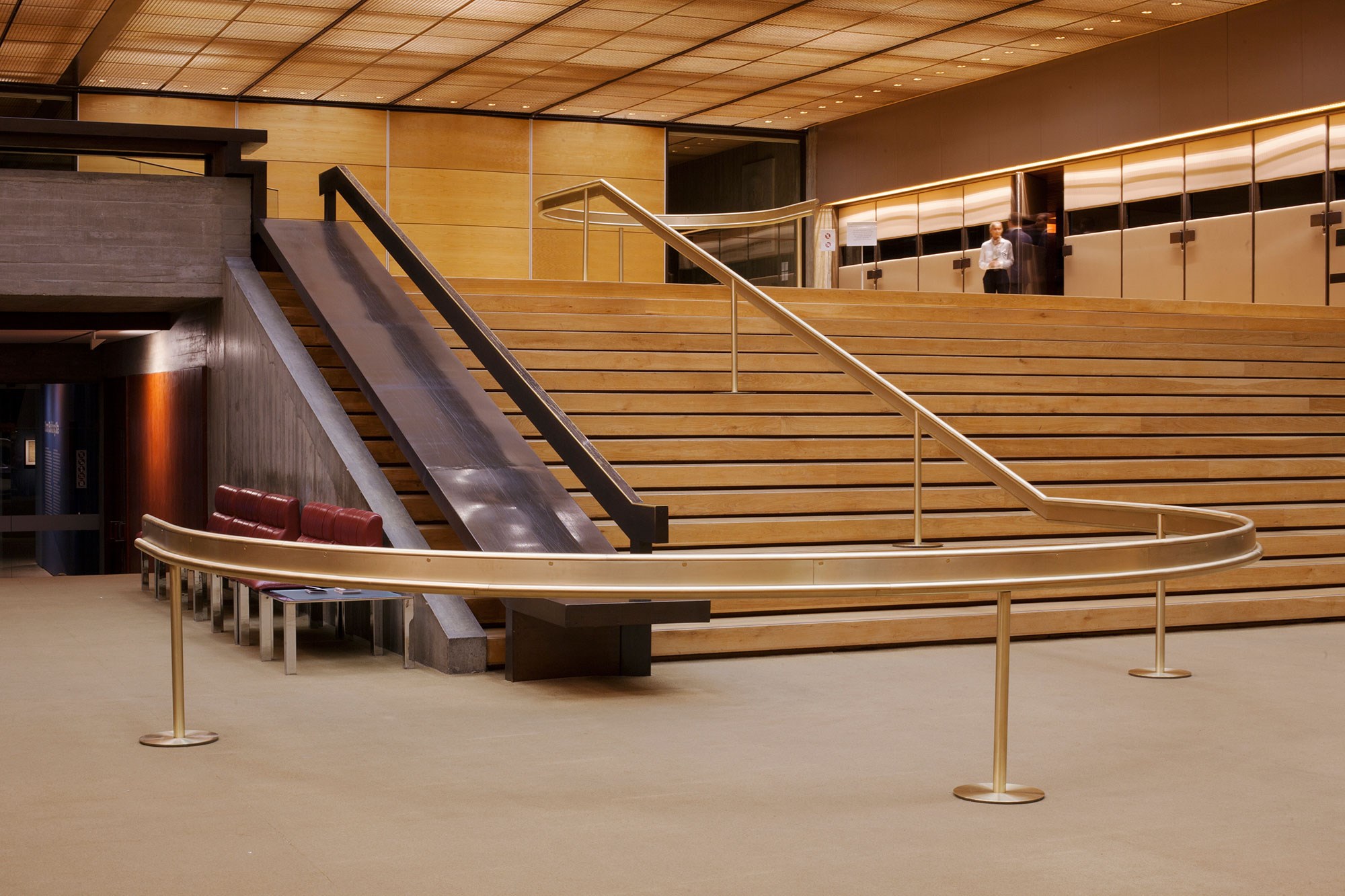
© Tiago Casanova
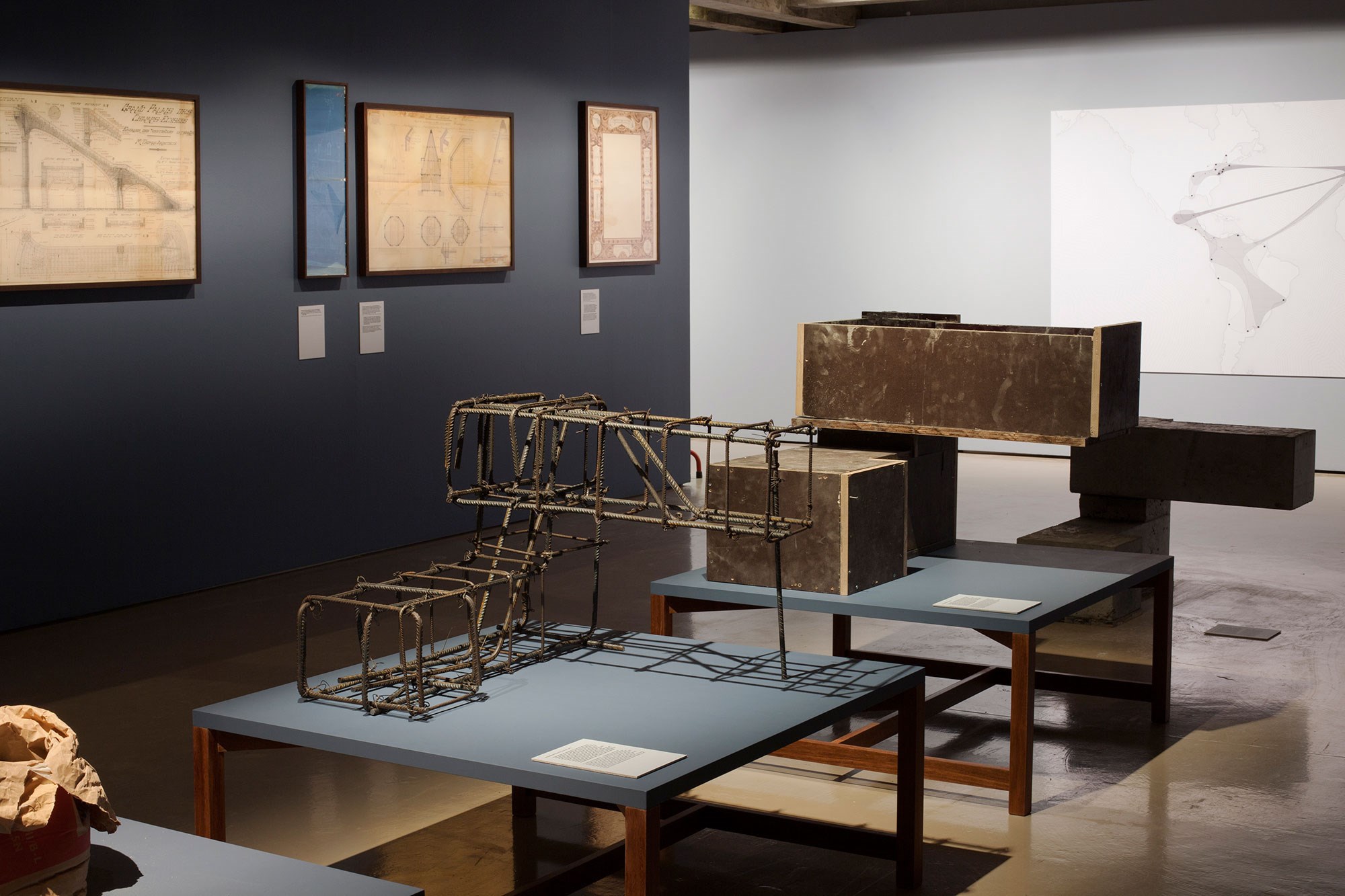
© Tiago Casanova
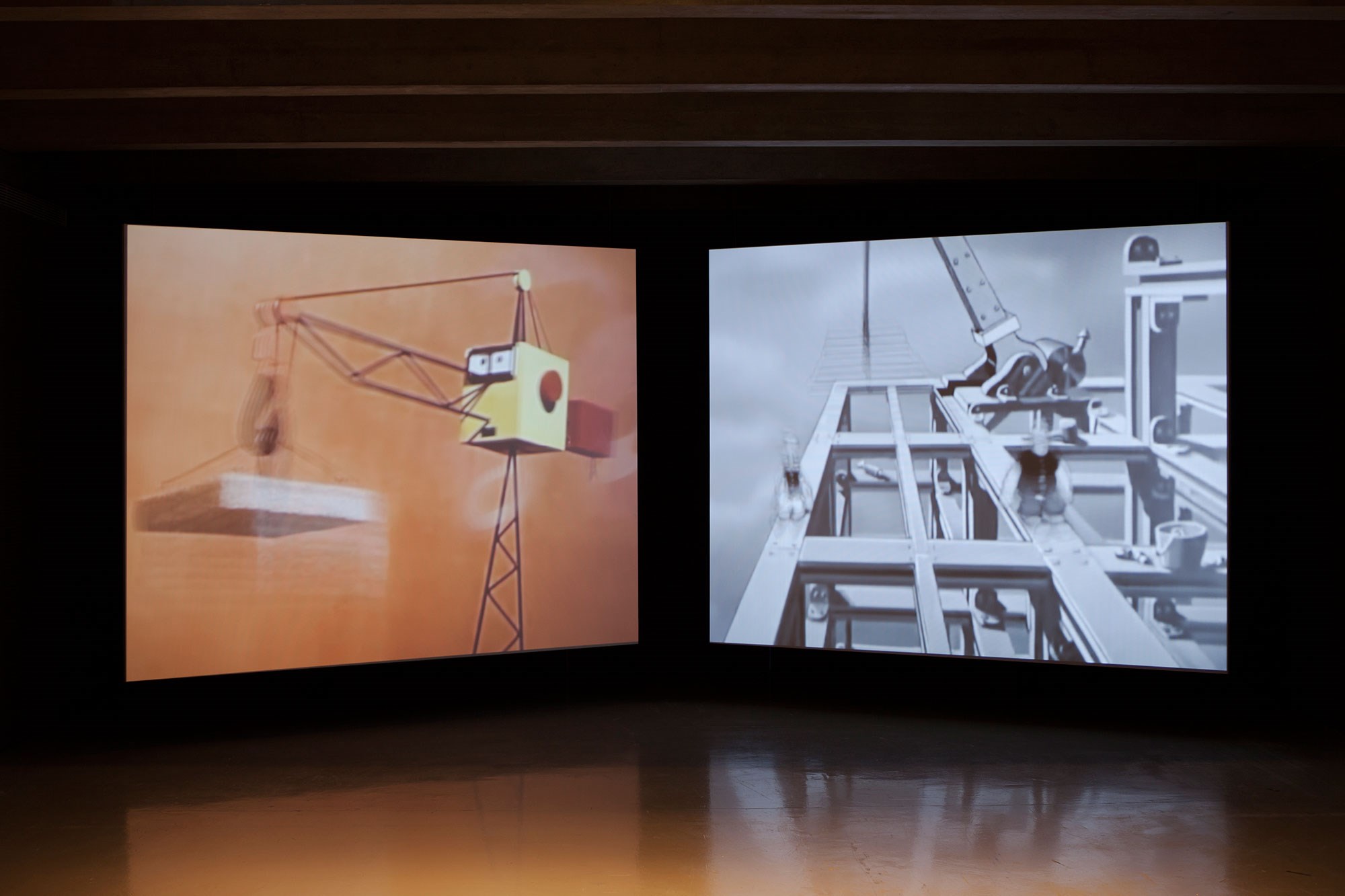
© Tiago Casanova
This interpretation of form finds its second implicit argument in the Building Site exhibition at Gulbenkian, curated by André Tavares. The primate of construction, the defence of the material dimension of architecture, finds its focus in the habitually occult process of building. Curiously, this had already been the theme of a piece in the last edition of J—A, directed by Tavares and Seixas Lopes. “The building site is the place where design becomes form”, declares the curator. Between the project and the constructed work, there is that determining mediating moment where everything is played and, above all else, where a great majority of the problems faced by architects are truly found, as Tavares keeps reminding us. The exhibition is surprising, not only because of its theme, but also because of its curatorial construction. Right at the entrance we are interpolated by a precisely designed balustrade that guides us to the gallery, created by SAMI, the atelier responsible for the exhibition design. The approach of various themes is spread across a diversity of devices, freely and openly passing through several points of view and historical moments. Indeed, it establishes an intentional crossover between contemporary issues and archival research. In the first case, for example, it presents Usina’s socially minded work in São Paulo and the complexity of great new and rehabilitated projects, such as OMA’s Casa da Música and David Chipperfield’s Neues Museum. In the second case we are presented with Cedric Price’s fascinating 1970’s project McAppy Report, which intended to reorganize the construction site, presented through a collaboration with CCA Montreal, along with the visionary process of the implementation of reinforced concrete at the end of the 19th Century by the Hennebique company, in this case shown through a partnership with the Cité de l’Architecture & du Patrimoine de Paris. These last two examples reveal the Triennale’s investment in establishing partnerships with important international institutions and archives. Finally, it is necessary to highlight “choreographies”, coordinated by Pedro Ignacio Alonso and Hugo Palmarola, which presents us with the popular reflexions of construction systems in animated films, confronting the presence of the metallic beam in the United States of America with the prefabricated concrete panel in the Soviet Union. This series of humoristic scenes placed side by side not only expresses the recent history of the world divided by the Iron Curtain, but also evidences the impact of architectural construction on culture in general. Building Site shed a light that is usually hidden from view behind screens. Suspended time that embodies the transformation magnificently captured in the long exposure photographs of the Berlin building sites by Michael Wesley. Also noteworthy is the reinforcement of the social dimension of the construction process which is presented in the film Labour, by Richard Seymour, Tim Abrahams and Pete Collard, an associated project of the Triennale presented at the Palácio Pombal, focussing on the testimonials of Portuguese workers in current building sites in London.
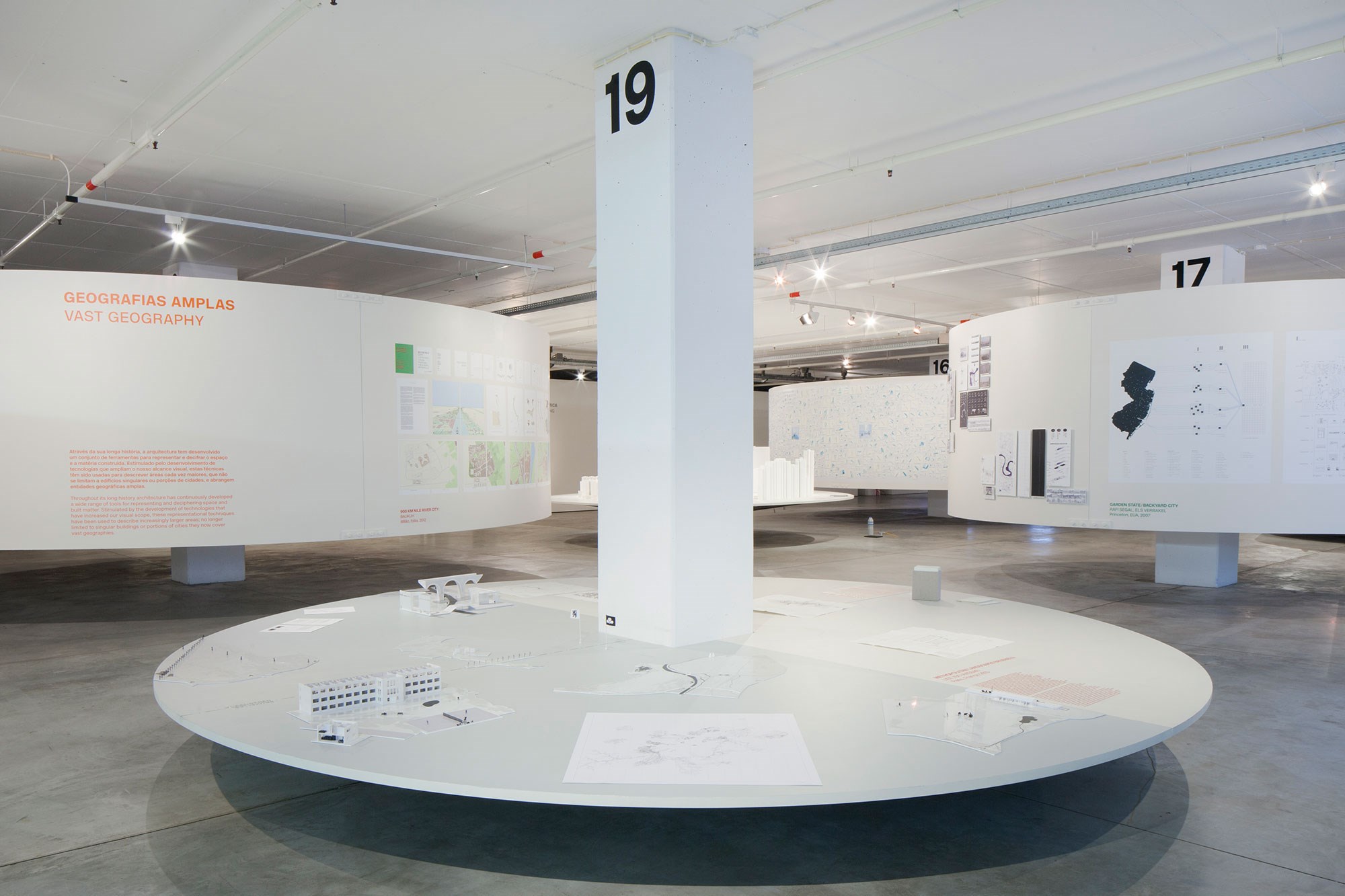
© Tiago Casanova
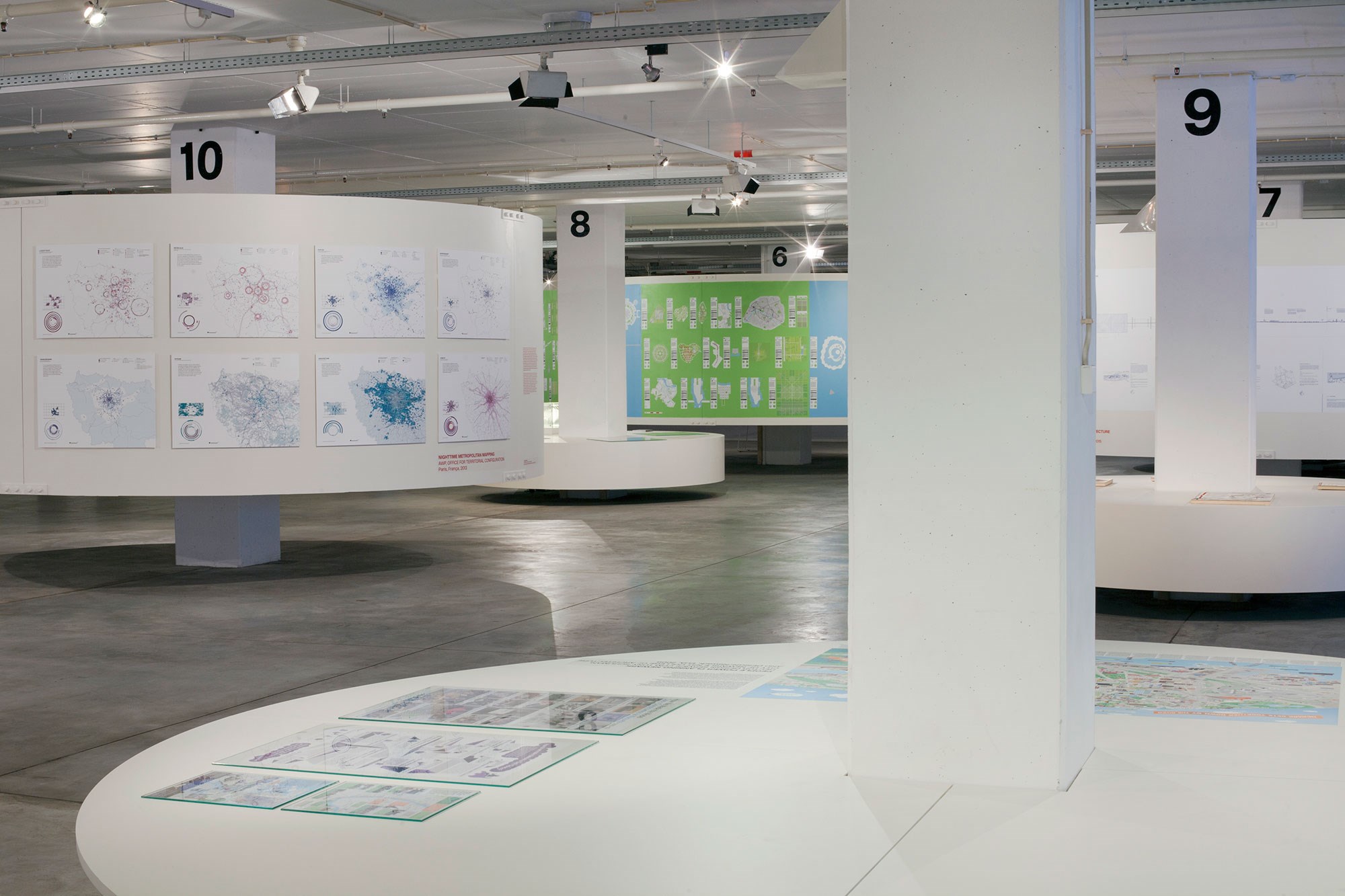
© Tiago Casanova
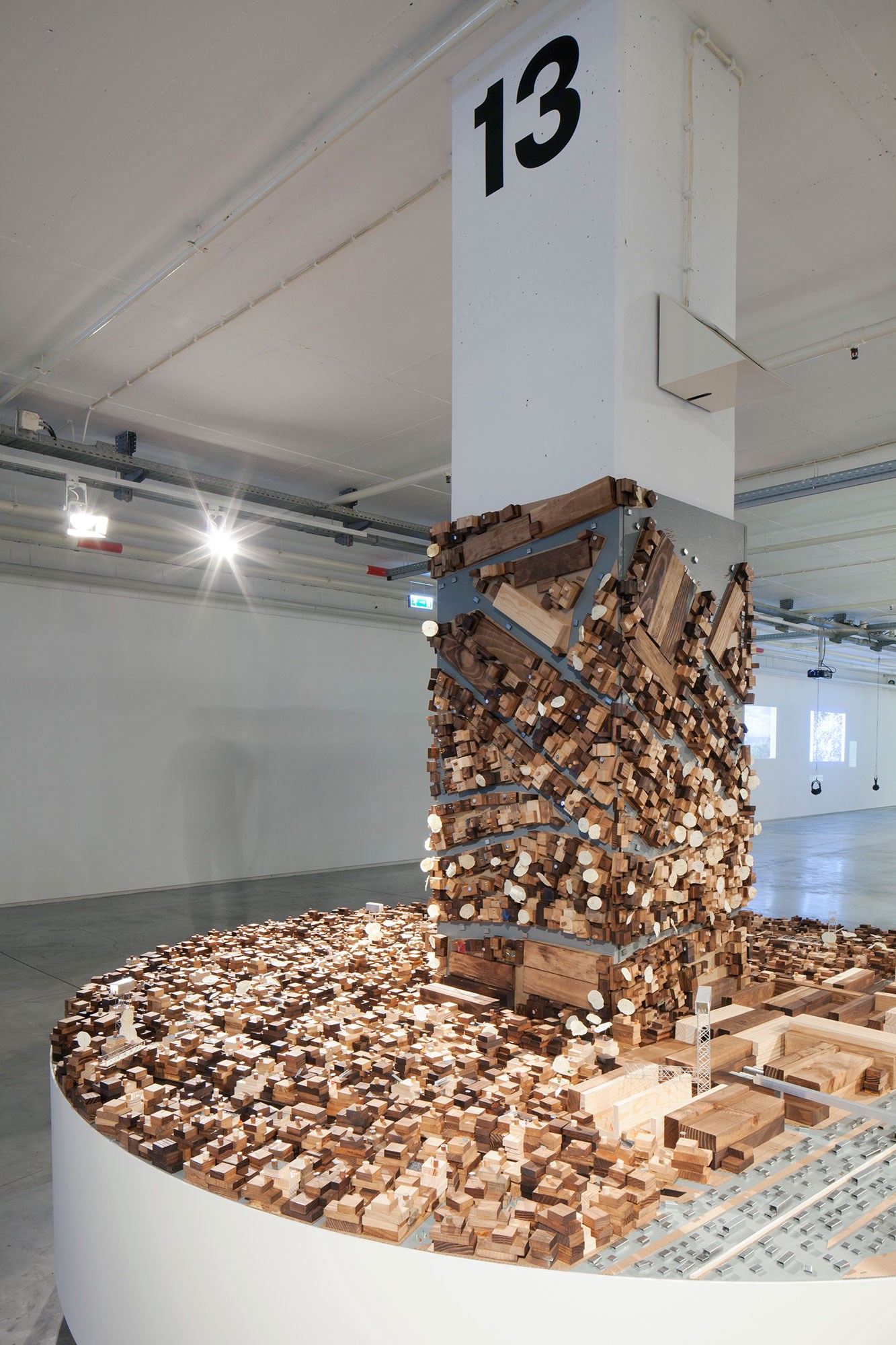
© Tiago Casanova
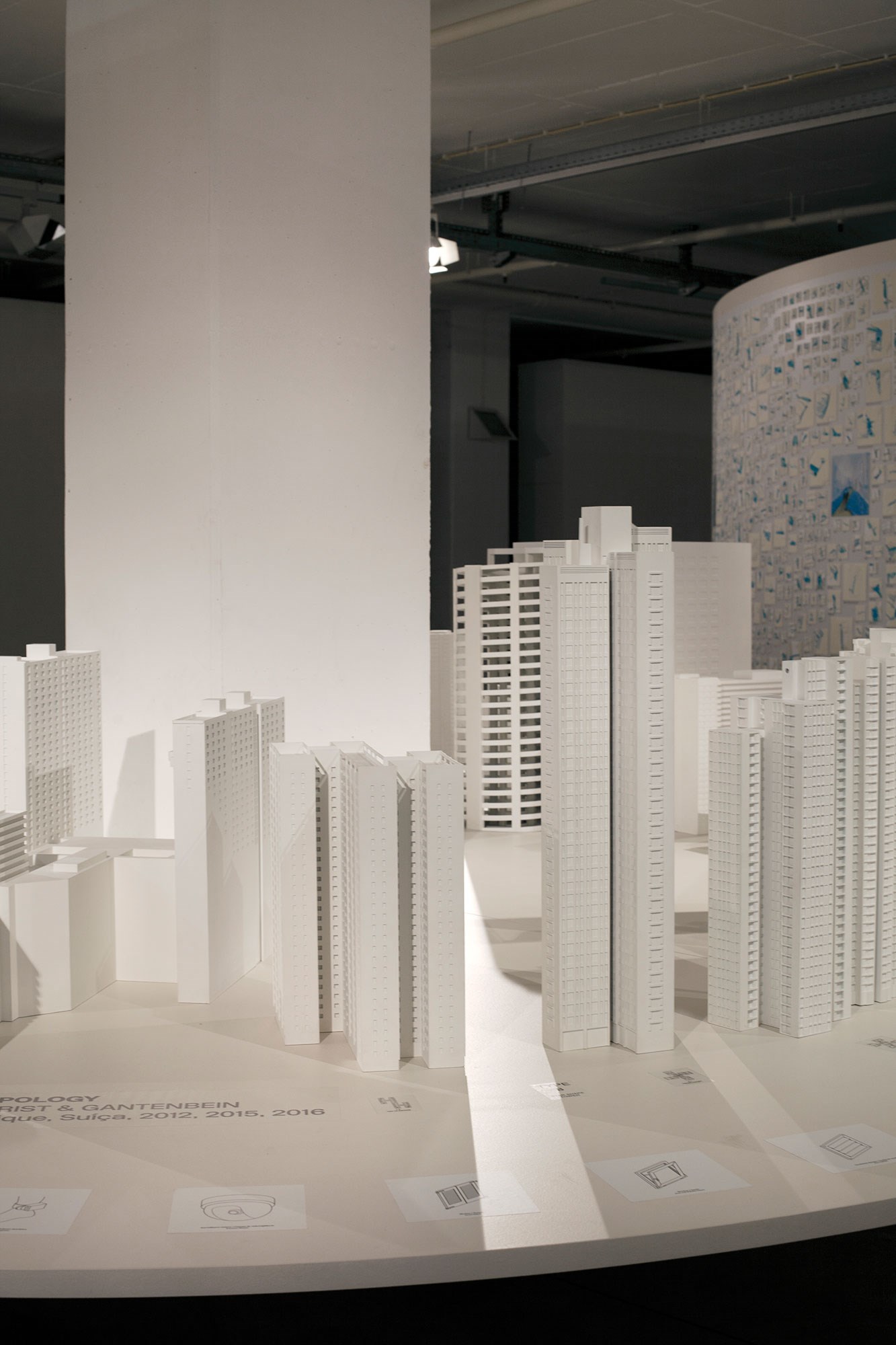
© Tiago Casanova
The third main site of the Lisbon Triennale is presented in the Southern Garage of the Belém Cultural Centre. Curated by the FIG Projects collective (Fabrizio Gallanti and Francesca Insulza), the exhibition The World in Our Eyes brings together for the first time a significant array of urban research, undergone over the last years in several locations around the world. Firstly, it is impressive to find such an array in one place, as we are used to finding this research scattered across conferences and publications. This already makes the exhibition worthwhile. The projects presented by theme develop very diverse perspectives, from the recovery of conceptions of utopia to typological and taxonomical investigations, as well as approaches to urban reality with activist undertones. First of all it is important to understand that the approach to the material presented is more analytical than propositional, crossing geographical, economic, social and cultural issues. In the words of the curators: “Architects have deployed a sophisticated arsenal of tools that are proper to their trade and have borrowed techniques and expertise from other disciplines to generate descriptions and analyses of complex matters. These actions intersect with the interest of economists, planners, developers, policy- makers and, moreover, have engaged audiences in novel understandings of cities. Here, and unlike the other exhibitions of the “tripod”, the architectural project is not the main focus, although it is not completely absent. The focus is essentially geared towards attempts of understanding, description and speculation derived from the contemporary urban condition, in continuity with the great transformations of modernity. When confronted with the material presented in the exhibition, it is important to recognize the growing interest of architects in these subjects and approaches, contributing with new analysis strategies and visualization devices. On the other hand, it also becomes evident that these new charges manifest a disciplinary reinvestment into questions of representation. In the exhibition, which was convincingly designed by the Swiss-Portuguese atelier Barão Hutton, diagrams, maps, blueprints, axonometric drawings, photographs, films and three-dimensional models dominate, revealing the intense appropriation of old instruments in new ways. In this context it is impressive to witness the new life of axonometric drawing. On the other hand, it is determinant to apprehend the bond that most of these investigations have with academic programmes at some of the most relevant universities of the Unites States of America, the Netherlands, Italy and England. But The World in Our Eyes manages to raise some important questions. It is impossible not to feel the distance between most of this research and concrete reality. Some of it, no matter how much one states the opposite, has a profoundly disciplinary dimension, which sometimes seems to assume a tonality that is strongly ironic or even delirious. For example, the dystopian appropriation of utopia in some cases, or the current freewheel taxonomical fever. If The World in Our Eyes demonstrates the will of architects to understand and act in the contemporary city, it also makes evident the distance that separates them from their objective.
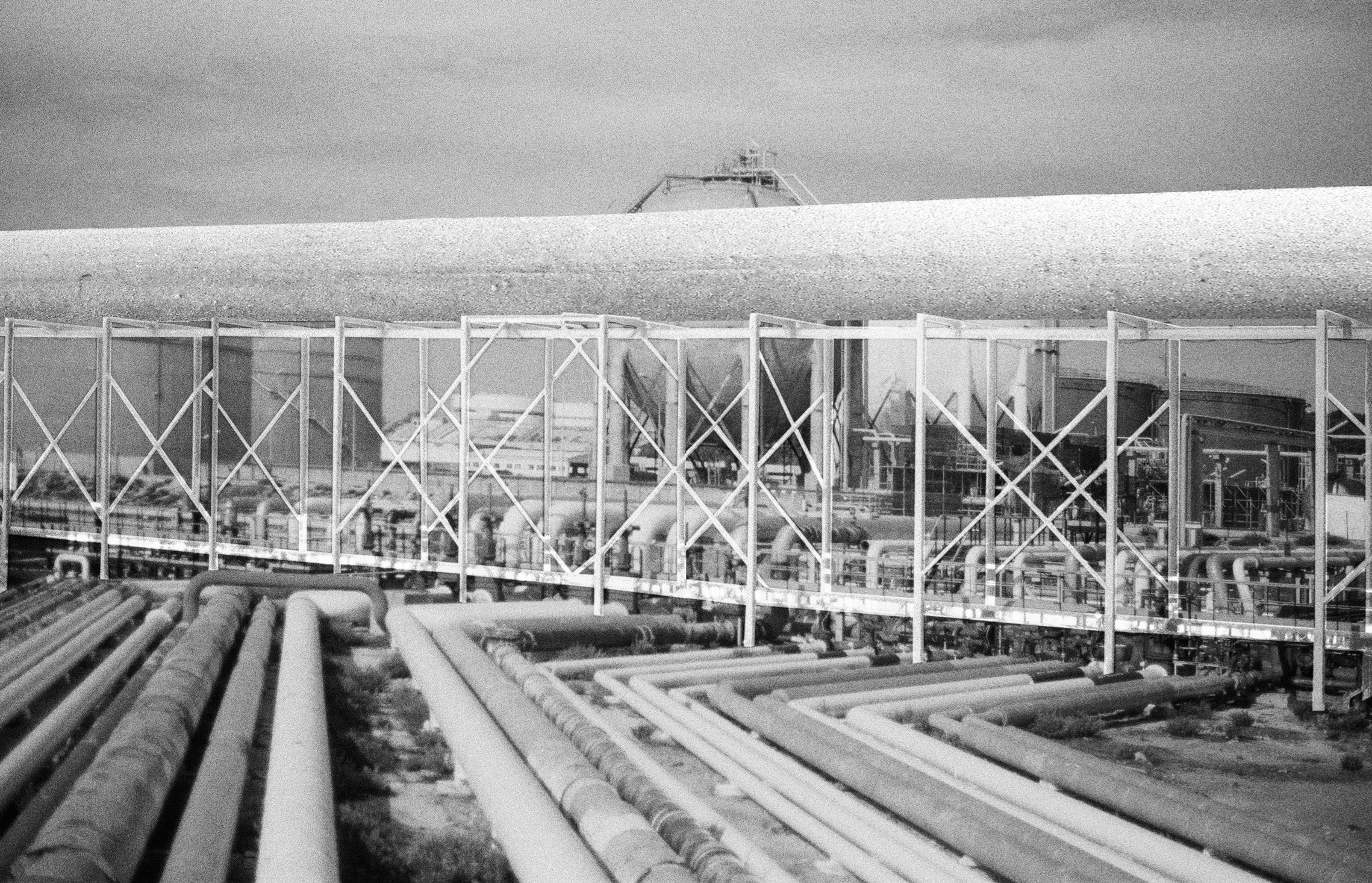
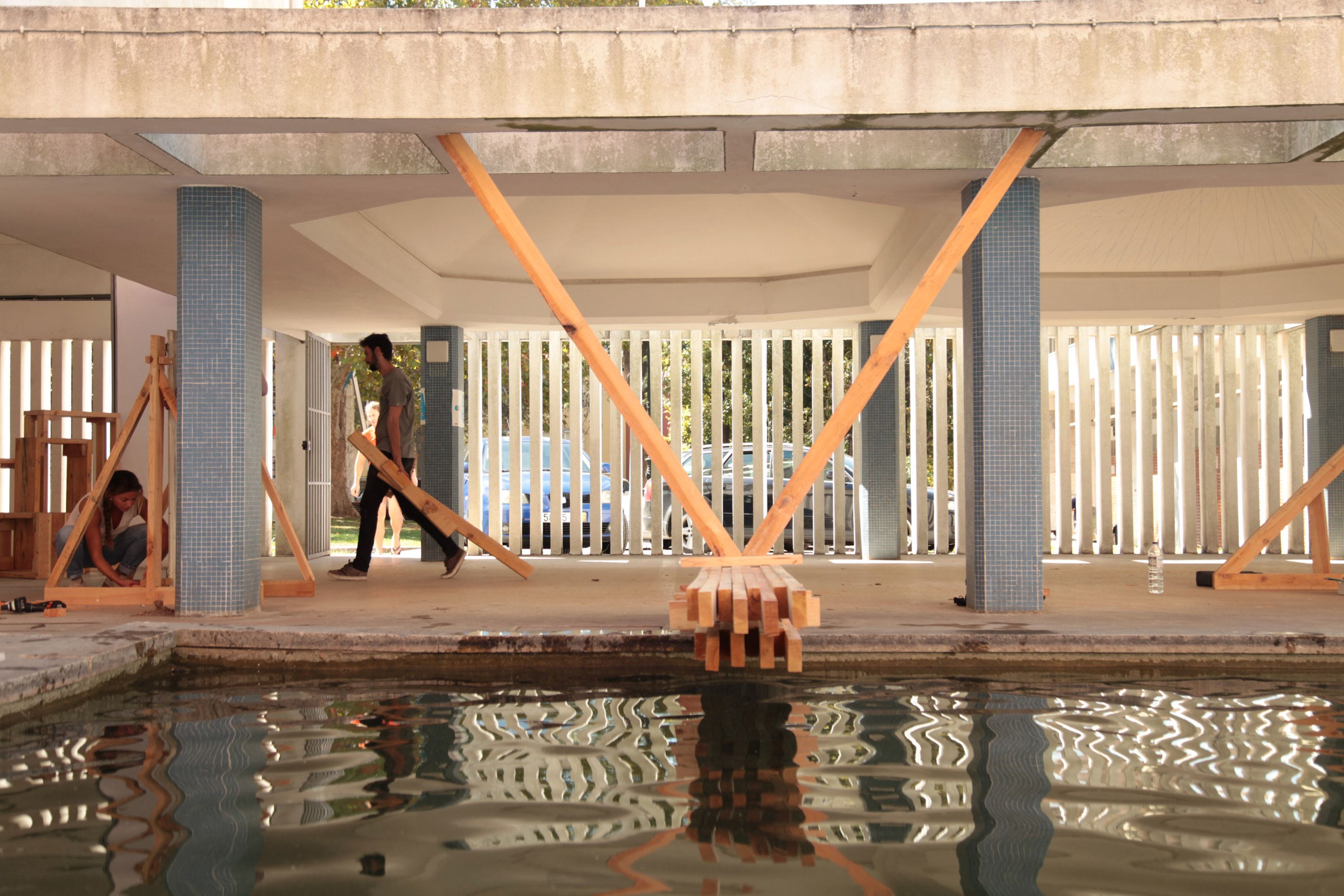
© Carlos Gomes
If the three main exhibitions make up the argument for The Form of Form, the satellite projects and associated projects allow for an expansion of the theme into other territories and fields of action. These projects fulfil the function of establishing links with the Portuguese reality, both academic and professional. The Sines competition, launched in the context of Portuguese architecture and landscaping schools brought forth the question of the territory’s infrastructure and logistics. Focussing on an extremely complex subject, with the exception of the winning project, a certain difficulty in dealing with the more programmatic and strategic questions of architecture emerged. A similar approach from that of The World in Our Eyes would have been useful here, regardless of the obvious anachronism. On the other hand, the project The Power of Experiment, coordinated by Artéria, called upon several Portuguese and Northern European universities to be involved in an experimental workshop. The healthy dialogue of different pedagogical practices aimed to question the bases of teaching through an essentially collective experience, however, due to the short duration of the event, it was difficult to accomplish a true involvement with the local reality.
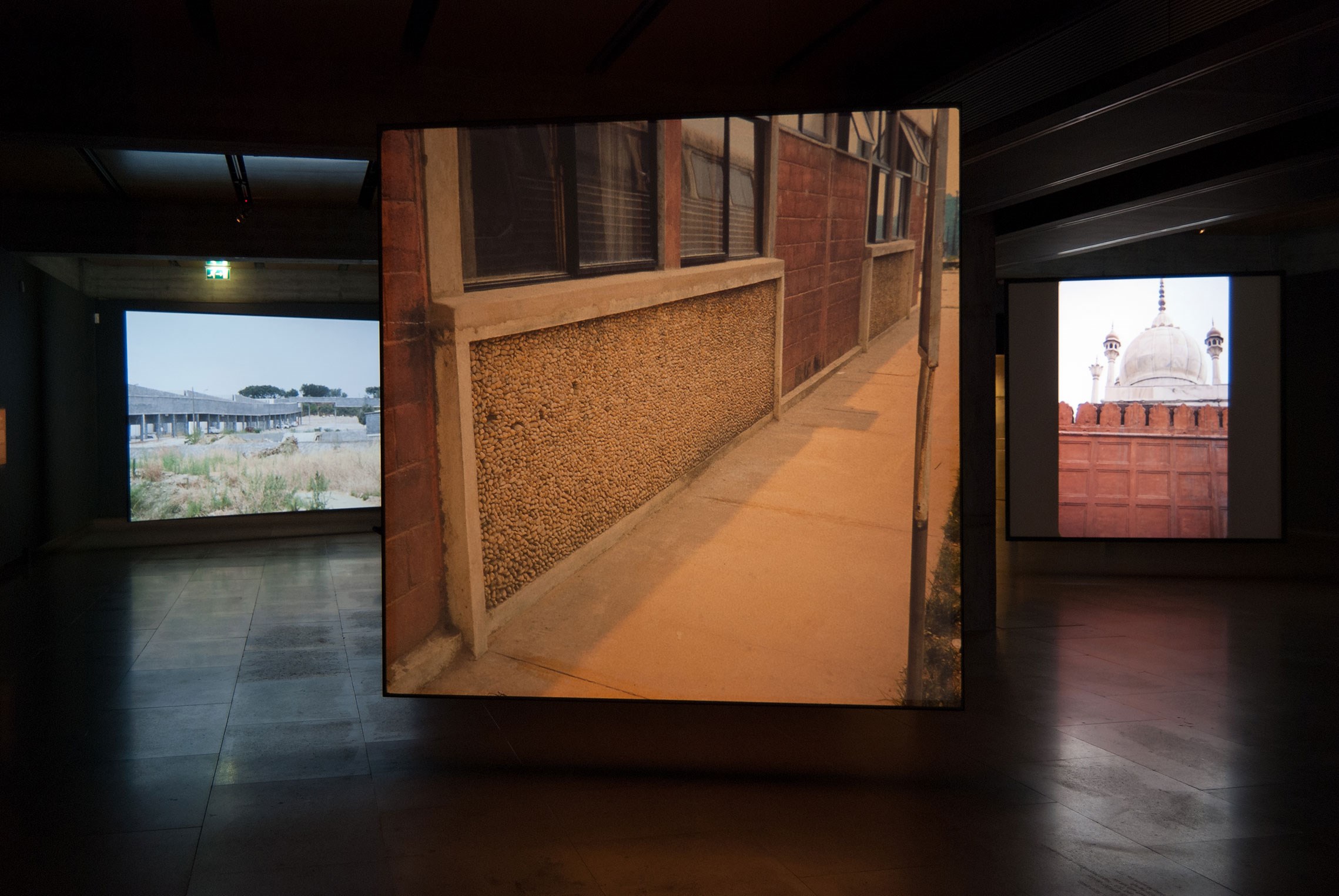
© Tiago Silva Nunes
Two other exhibitions deal with the Portuguese reality differently, by amplifying the theme The Form of Form. Presented at Gulbenkian, The Shape of Plain, curated by Eliana Sousa Santos, presents a fascinating parallel, based on George Kubler’s book The Shape of Time, between architecture and art, establishing unexpected connections between Portugal and the United States. If on the one hand it reveals the power of the association of forms and images in the construction of history, which is very present in Ad Reinhart and Robert Smithson’s videos, on the other, it makes evident the dominant foundations of Portuguese architectural culture, based in Kubler’s definition of “plain architecture”, extremely well expressed in the selection of images of Portugal belonging to the personal archive of the art historian and in the conference recorded by Paulo Varela Gomes. In another sense, Object-Project, curated by Godofredo Pereira, explicitly introduces the ideological questions of architecture, with an analysis of the urban context of the southern margin of Lisbon crossed with the formation of the workers movements and associations of political resistance. Presented at the old Trafaria prison, surprisingly within the chapel, the exhibition reveals the role of social implications and transformations in the formalization of a certain specific territory.
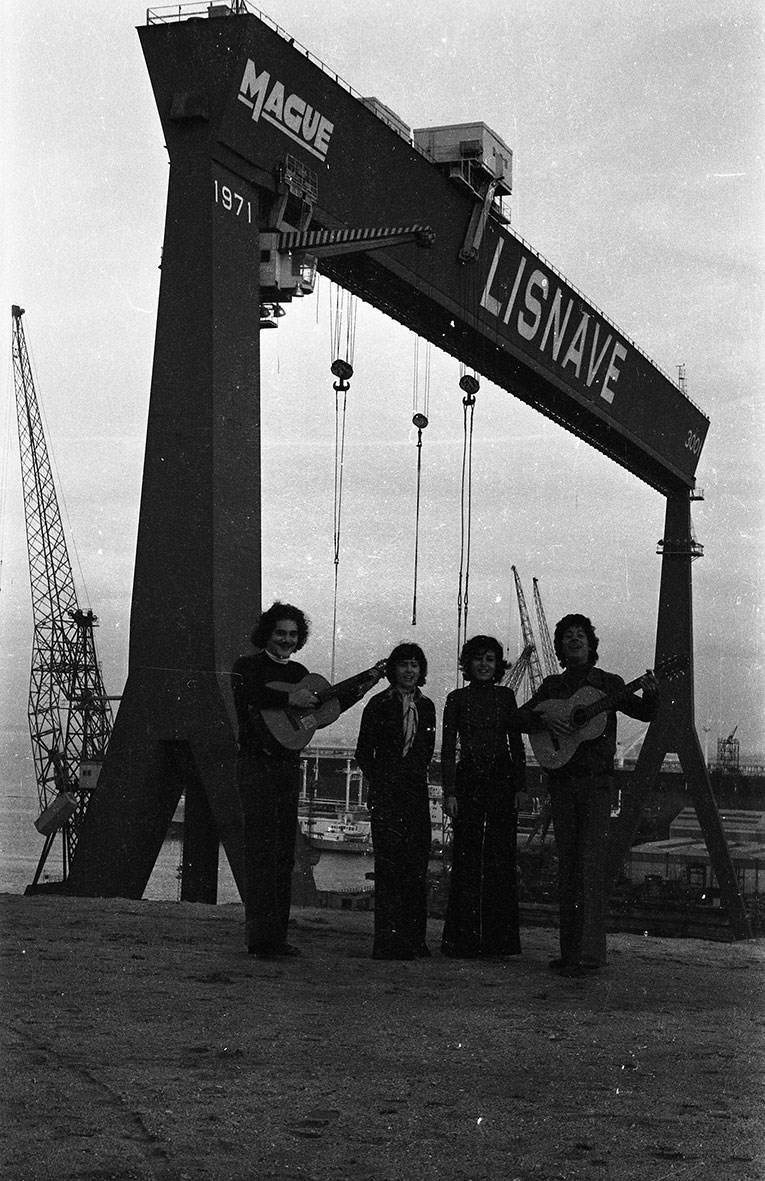
© Júlio Diniz, CMA-MCA JD
Other exhibitions further reinforce the presence of Lisbon in this year’s Triennale. If, on the one hand, Letters to the Mayor, a project by Storefront for Art and Architecture, now in Lisbon under the orientation of Ivo Poças Martins, presents a critical dialogue with city in the form of a series of open letters, on the other, the exhibition The Limits of Landscape, presented at Raul Lino’s Casa Roque Gameiro in Amadora, approaches the question of the peripheries of the Lisbon metropolitan area. It is also noteworthy to mention the disturbing films Ruins of Apocalypse by Cyprien Gaillard, purposely presented at the Thalia Theatre.
The 4th edition of the Lisbon Architecture Triennale about The Form of Form reveals the undeniable contemporary pertinence of the theme of form, as well as the consistency of the strategy devised by André Tavares and Diogo Seixas Lopes. As a programme it is able to consistently and enticingly approach a pressing theme, avoiding the traps of formalism without limiting its field of action. It is also an adequate response to the various audiences that are targeted by an event of this nature. Admittedly disciplinary, this Triennale is still able to communicate with a wider audience. The Talk, Talk, Talk conferences, centred on the themes of the main exhibitions, while embedded in a somewhat lukewarm environment, did not fail to develop some questions. However, after the event we are left with the publications. The decision to duplicate the editions with, on one hand, the small catalogues of each of the four main exhibitions in Portuguese, and on the other, the book in English published Lars Müller, a prestigious publisher that has come to serve a majority of European biennales and triennales, raises some important questions. If the efficacy of the first is achieved by taking on a catalogue format at an accessible price, the second case reveals a certain indecision between the more dependent model of the catalogue and the more autonomous one of the book. With such a powerful theme, one is left with the feeling that this would have been a unique opportunity to construct the theoretical argument and disciplinary genealogy of The Form of Form.
However, it is clear that The Form of Form will somehow cement this disciplinary turn in an international context, where it is still met with resistance. It should be stressed that on this level the Lisbon Triennale has taken part in the great forums of debate in the scope of the main biennales and triennales, including Venice, Lisbon, Oslo, Istanbul, Chicago, etc., a situation that was materialized in the successive debates about the future of these periodical events, embodied by the parallel programme – Ennials. The internationalization of the Lisbon Architecture Triennale is now a given. We eagerly await the 2019 edition. ◊